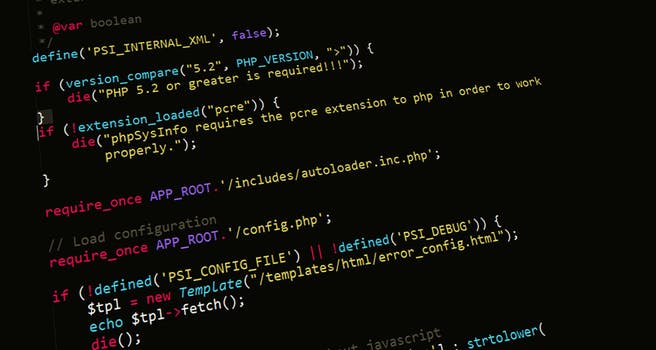TheDeveloperBlog.com
C-Sharp | Java | Python | Swift | GO | WPF | Ruby | Scala | F# | JavaScript | SQL | PHP | Angular | HTML
Golang unicode.IsSpace (If Char Is Whitespace)
Use the unicode.IsSpace func from the unicode package to test for space chars. Call TrimFunc.Unicode.IsSpace. Whitespace characters often need to be handled in a different way than other characters. We need to test for spaces (and other whitespace chars).
With the unicode package, we can test for all whitespace without recalling the entire set ourselves. The unicode.IsSpace func is useful in many programs.
First example. Here we loop over the runes in a string. We use unicode.IsSpace on each rune to see if it is a space character. We also detect the ASCII code 32 (for space).
Result: The tab, newline and space characters are detected by the unicode.IsSpace func.
Golang program that uses unicode.IsSpace
package main
import (
"fmt"
"unicode"
)
func main() {
value := "\tHello, friends\n"
// Loop over chars in string.
for _, v := range value {
// Test each character to see if it is whitespace.
if unicode.IsSpace(v) {
fmt.Println("Is space:", v)
if v == 32 {
fmt.Println("ASCII code for space")
}
}
}
}
Output
Is space: 9
Is space: 32
ASCII code for space
Is space: 10
TrimFunc, IsSpace. Consider a func like TrimFunc. The second argument required with TrimFunc is a func. We can pass unicode.IsSpace directly as the second argument.
Tip: This style of code is cleaner and less prone to bugs than implementing a custom IsSpace method ourselves.
Golang program that uses TrimFunc, unicode.IsSpace
package main
import (
"fmt"
"unicode"
"strings"
)
func main() {
value := "\n Hello, friends"
// Use unicode.IsSpace as the func argument to TrimFunc.
result := strings.TrimFunc(value, unicode.IsSpace)
// Print before and after.
fmt.Println("[" + value + "]")
fmt.Println("[" + result + "]")
}
Output
[
Hello, friends]
[Hello, friends]
A review. The unicode module in Golang has many methods that can be used to test ranges of characters. These funcs can lead to simpler, clearer and more standard Golang code.Func
© TheDeveloperBlog.com
The Dev Codes
Related Links:
- Golang strconv, Convert Int to String
- Golang Odd and Even Numbers
- Golang Recover Built In: Handle Errors, Panics
- Learn Go Language Tutorial
- Golang html template Example
- Golang http.Get Examples: Download Web Pages
- Golang container list Example (Linked List)
- Golang base64 Encoding Example: EncodeToString
- Golang os exec Examples: Command Start and Run
- Golang String Between, Before and After
- Golang os.Remove: Delete All Files in Directory
- Golang First Words in String
- Golang flag Examples
- Golang Regexp Find Examples: FindAllString
- Golang Regexp Examples: MatchString, MustCompile
- Golang Index, LastIndex: strings Funcs
- Golang Compress GZIP Examples
- Golang Interface Example
- Golang 2D Slices and Arrays
- Golang Sscan, Sscanf Examples (fmt)
- Top 41 Go Programming (Golang) Interview Questions (2021)
- Golang Padding String Example (Right or Left Align)
- Golang Equal String, EqualFold (If Strings Are the Same)
- Golang map Examples
- Golang Map With String Slice Values
- Golang Array Examples
- Golang Remove Duplicates From Slice
- Golang If, Else Statements
- Golang ParseInt Examples: Convert String to Int
- Golang Strings
- Golang strings.Map func
- Golang bufio.ScanBytes, NewScanner (Read Bytes in File)
- Golang Built In Functions
- Golang bytes.Buffer Examples (WriteString, Fprintf)
- Golang Bytes: Slices and Methods
- Golang Caesar Cipher Method
- Golang Chan: Channels, Make Examples
- Golang Math Module: math.Abs, Pow
- Golang Reverse String
- Golang Struct Examples: Types and Pointers
- Golang path and filepath Examples (Base, Dir)
- Golang Substring Examples (Rune Slices)
- Golang Suffixarray Examples: New, Lookup Benchmark
- Golang switch Examples
- Golang Convert Map to Slice
- Golang Convert Slice to String: int, string Slices
- Golang Const, Var Examples: Iota
- Golang ROT13 Method
- Golang strings.Contains and ContainsAny
- Golang rand, crypto: Random Number Generators
- Golang String Literal Examples (Repeat Method)
- Golang ToLower, ToUpper String Examples
- Golang Trim, TrimSpace and TrimFunc Examples
- Golang Join Examples (strings.Join)
- Golang Len (String Length)
- Golang Convert String to Rune Slice (append)
- Golang JSON Example: Marshal, Unmarshal
- Golang Replace String Examples: Replacer, NewReplacer
- Golang nil (Cannot Use nil as Type)
- Golang Slice Examples
- Golang ListenAndServe Examples (HandleFunc)
- Golang Fibonacci Sequence Example
- Golang Time: Now, Parse and Duration
- Golang bits, OnesCount (Get Bitcount From Int)
- Golang Fprint, Fprintf and Fprintln Examples (fmt)
- Golang Func Examples
- Golang csv Examples
- Golang Fields and FieldsFunc
- Golang unicode.IsSpace (If Char Is Whitespace)
- Golang fmt.Println Examples
- Golang for Loop Examples: Foreach and While
- Golang ioutil.WriteFile, os.Create (Write File to Disk)
- Golang File Handling
- Golang range: Slice, String and Map
- Golang Readdir Example (Get All Files in Directory)
- Golang Sort Slice: Len, Less, Swap in Interface
- Golang Get Lines in File (String Slice)
- Golang Split Examples (SplitAfter, SplitN)